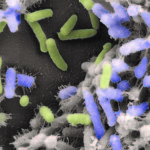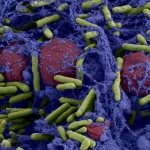Link to Pubmed [PMID] – 17420234
Infect Immun. 2007 Jul;75(7):3233-44
Escherichia coli is the primary cause of urinary tract infection (UTI) in the developed world. The major factors associated with the virulence of uropathogenic E. coli (UPEC) are fimbrial adhesins, which mediate specific attachment to host receptors and trigger innate host responses. Another group of adhesins is represented by the autotransporter subgroup of proteins. The best characterized of these proteins, antigen 43 (Ag43), is a self-recognizing adhesin that is associated with cell aggregation and biofilm formation in E. coli K-12. The sequenced genome of prototype UPEC strain CFT073 contains two variant Ag43-encoding genes located on pathogenicity islands. The biological significance of both of these genes and their role in UPEC pathogenesis have not been investigated previously. Here we performed a detailed molecular characterization analysis of Ag43a (c3655) and Ag43b (c1273) from UPEC CFT073. Expression of Ag43a and Ag43b in a K-12 background revealed that they possess different functional properties. Ag43a produced a strong aggregation phenotype and promoted significant biofilm growth. Deletion mutants and strains constitutively expressing Ag43a and Ag43b were also constructed using CFT073. When these mutants were analyzed in a mouse model of UTI, Ag43a (but not Ag43b) promoted long-term persistence in the urinary bladder. Our findings demonstrate that Ag43a contributes to UPEC disease pathogenesis and reveal that there are pathogenicity-adapted variants of Ag43 with distinct virulence-related functions.



